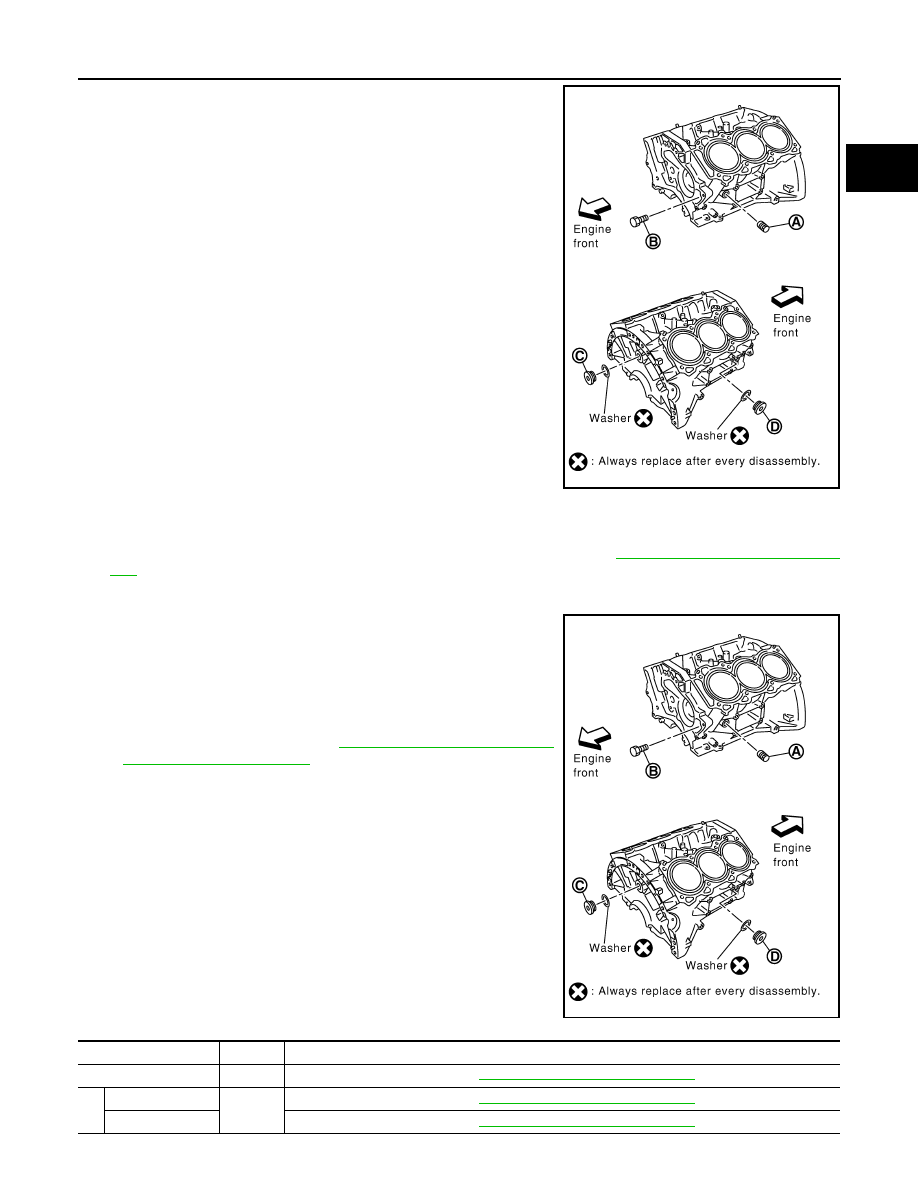Nissan Pathfinder (2008 year). Manual - part 128

ENGINE COOLANT
CO-13
< ON-VEHICLE MAINTENANCE >
[VQ40DE]
C
D
E
F
G
H
I
J
K
L
M
A
CO
N
P
O
4.
When draining all of the coolant in the system for engine
removal or repair, it is necessary to drain the cylinder block.
Remove the cylinder block drain plugs (A), (B), (C), (D) and
block heater if equipped, to drain the cylinder block as shown.
NOTE:
For Canada, the (D) cylinder block drain plug as shown, is not a
cylinder block drain plug but a block heater.
5.
Remove the reservoir tank to drain the engine coolant, then clean the reservoir tank before installing it.
6.
Check the drained coolant for contaminants such as rust, corrosion or discoloration.
If the coolant is contaminated, flush the engine cooling system. Refer to
.
REFILLING ENGINE COOLANT
1.
Close the radiator drain plug. Install the reservoir tank, cylinder
block drain plugs (A), (B), (C), (D) and block heater if equipped,
if removed for a total system drain or for engine removal or
repair.
• The radiator must be completely empty of coolant and water.
• Apply sealant to the threads of the cylinder block drain plugs
(A), (B), (C), (D). Use Genuine High Performance Thread
Sealant or equivalent. Refer to
.
Block Plug and Block Heater Installation
WLIA0020E
WLIA0020E
Part
Washer
Tightening Torque
A
No
EM-106, "Disassembly and Assembly"
.
B
Reuse
No
EM-106, "Disassembly and Assembly"
.
New
EM-106, "Disassembly and Assembly"
.